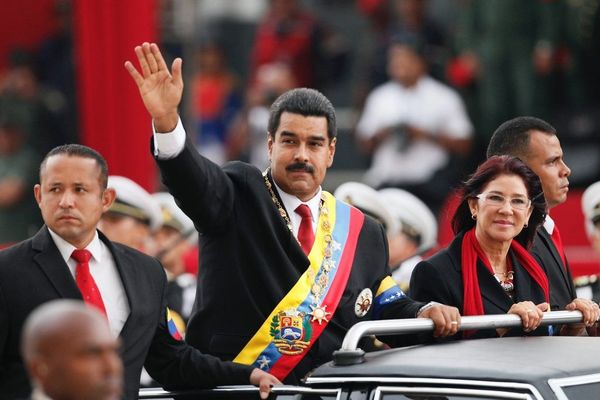In his first summit with U.S. President Donald Trump, Chinese President Xi Jinping offered his counterpart a Chinese calligraphy scroll with the aphorism “a journey of a thousand miles begins with a single step.”
Despite the lofty stakes involved in one of the world’s most important bilateral relationships, the achievements of the Mar-a-Lago meeting were modest, amounting to a strong introduction between the two world leaders and a springboard for future high-level discussions on economic and security issues of mutual concern, such as North Korea’s nuclear and missile program and bilateral trade.
In many ways the Mar-a-Lago summit mirrored 2013’s Sunnylands summit between Xi and then-President Barack Obama. Like Trump’s Mar-a-Lago resort, the Sunnylands ranch offered a relaxed setting where Obama and Xi could focus on important economic and security issues.
At Sunnylands, both leaders agreed that North Korea’s leadership was “incessantly dangerous.” At Mar-a-Lago, Trump and Xi agreed to “increase cooperation” on denuclearizing North Korea. But in neither instance did the leaders come up with specific policy prescriptions to advance this mutual goal.
In both summits, the leaders agreed to sidestep some contentious issues while gingerly addressing others. Obama and Xi dodged discussions of trade agreements and tariffs. Trump and Xi avoided security issues.
“The inaugural meeting downplayed highly contentious issues, including Taiwan, the South China Sea, East China Sea, and others,” Tim Heath, a senior defense and international analyst at RAND, told The Cipher Brief. “But the differences run deep, and frustration is palpable on both sides.” Temporarily avoiding disagreements allowed the world leaders to focus on building a relationship in hopes of paving the way for more productive future discussions on difficult issues.
So far, the Trump administration’s biggest “asks” of China involve North Korea and trade relations. While the two nations are nominally in agreement over denuclearizing North Korea, they have not reached an understanding on how to cooperate on this objective. It would seem that the Mar-a-Lago summit has not moved the needle very far on this front. The U.S. decision to reroute the Carl Vinson carrier group to the Korean peninsula as a deterrent signal to North Korean leader Kim Jong-un seems more in line with Trump’s pledge to go it alone on North Korea than a signal that a bilateral policy response between Washington and Beijing is forthcoming.
The discussion over trade relations was slightly more productive. As a candidate and as president, Trump has accused China of being a currency manipulator, contributing to the loss of U.S. manufacturing jobs and driving up the U.S. trade deficit. To address trade concerns, the two sides agreed on a 100-day plan to find a starting point for improved trade relations.
Though the Mar-a-Lago summit produced few policy deliverables, each leader managed to look strong to his domestic audience. Trump benefitted from the symbolic impact of his order to strike Syria with cruise missiles, making a display to the Chinese leader that his words are backed by action. By avoiding any controversial subjects or gaffes resulting from Trump’s seemingly erratic comments, Heath says, Xi gave “a clear demonstration of his ability to manage relations with the U.S.” and “provided a valuable boost to his political authority in the lead up to this year’s 19th Party Congress.” The Congress is important to Xi because it will determine whether or not he will serve a second term as president and will offer him the opportunity to add political allies to the politburo standing committee.
While most experts agree that the summit was important for cementing a good personal relationship between the two world leaders, the verdict is out on how it will benefit future relations. Will Heidlage, a research director at Bower Group Asia, told The Cipher Brief “the only ‘objective’ of this meeting was in reality tactical: build a relationship between the two leaders that will pay dividends down the line.” Heath believes that the meeting “may have ameliorated the tensions that Trump exacerbated in the few months following his electoral victory, but it failed to provide a single objective toward which China and the United States can jointly work.”
With so many areas of friction between the two countries, the summit was defined more by what it did not cover rather than what it did. By skirting issues such as Taiwan, tensions in the South and East China Seas, currency manipulation and climate change, Trump and Xi could focus on sizing each other up and making impressions likely to influence how the two deal with each other in the future.
However, a risk of ignoring these issues during the summit is that each nation may misunderstand the other’s priorities. Mar-a-Lago may have been a modest step forward in bilateral relations, but there is no telling if it was down the right path.
Will Edwards is an international producer at The Cipher Brief. Follow him on Twitter @_wedwards.













